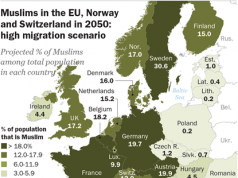 By Dr Reema Pant
By Dr Reema Pant
Risk posed by hazards or losses incurred during and after a disaster happen because of the lack of preparedness of the people before it strikes. While substantial funds are allocated for technology intervention, relief, and rehabilitation, often preparedness, sensitisation, and awareness get the least priority. Sensitisation and awareness programmes — through community drills, school lessons, and local planning — are the quiet backbone of disaster resilience.
Such programs help transform vulnerability into preparedness and panic into organised action. They are, in fact, the most effective methods for creating a resilient community without any complicated intervention.
India’s disaster management framework places community awareness and behaviour change at the centre of preparedness. Community-based disaster risk reduction (CBDRR) is a crucial tool for mitigating losses and ensuring timely responses through regular training and awareness programs.
Approximately 60% of the Indian subcontinent is prone to various disasters, primarily due to its proximity to water bodies, floodplains, glaciers, high-altitude mountains, and active tectonic activity. Even as assistance is available in cities, rural India remains particularly vulnerable, with many villages located in hazardous areas, such as floodplains, landslide-prone slopes, or near unstable riverbanks.
Government-led programmes, such as Aapda Mitra, have trained nearly one lakh community volunteers, enabling a local response in the critical first hours of a disaster. Despite sensitisation efforts that include hazard mapping, early warning literacy, and household-level preparedness, much still needs to be addressed.
India, being a young nation, has a reservoir of youth in schools and universities who can not only be trained but also create a culture of safety and compassion.
NDMA encourages schools and institutions to conduct mock drills, prepare disaster management plans, and train teachers. Children who undergo mock drills and preparedness skills carry that knowledge home, leading to community awareness and, in turn, building a resilient society.
Unlike villages, cities require a more coordinated disaster sensitisation and awareness program, as they are densely and intricately populated. Municipal drills, public information systems, and active resident welfare associations can play vital roles in ensuring urban resilience and institutional readiness. Again, all this needs sincere and regular drills on sensitisation and awareness.
During disasters, women are often more vulnerable; yet it’s a fact that they play a central role in disaster preparedness. Of India’s nearly 95,000 trained Aapda Mitra volunteers, about 19,000 are women.
Their roles as teachers, caregivers, and community organisers make them natural leaders in spreading awareness and managing household readiness. Programmes empowering women and self-help groups have proven to improve community resilience and response significantly.
Regular sensitisation and awareness programs, not one-time campaigns, create resilient communities.
In a country like ours, where disasters are common, villages, schools, and cities must integrate awareness into daily life; preparedness must become second nature. Investing in information, education, and community-led training is the most effective way to reduce losses and strengthen India’s collective safety net.
(Dr Reema Pant is a lifelong learner, environmental educator, and advocate for gender rights. She works at the intersection of sustainable development, science education, women’s empowerment, and disaster resilience in the Indian Himalayan region.)







